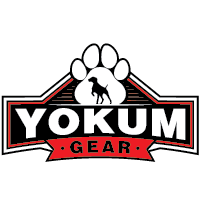When it comes to finding the ideal harness for your dachshund, there is more to consider than simply selecting a stylish design. Dachshunds, with their unique body shape and specific health needs, require a harness that offers both comfort and support. This guide will walk you through the key factors to consider when choosing the perfect harness for your beloved pet.
Understanding the Dachshund's Anatomy
Dachshunds are known for their long bodies and short legs, a combination that makes them particularly prone to back problems, such as Intervertebral Disc Disease (IVDD). This anatomical structure necessitates a harness that evenly distributes pressure and reduces strain on the spine. The right harness can help prevent potential injuries and support your dachshund's overall well-being.
Types of Harnesses
There are several types of harnesses available, and each offers different benefits:
Vest Harness
The vest harness is designed with a wide, padded vest that wraps around the dog’s torso. This type offers excellent support and is particularly good for dachshunds with back issues, as it distributes weight evenly across the chest and shoulders rather than the neck.
Step-In Harness
The step-in harness is easy to use and can be quickly fitted onto your dog. Your dachshund simply steps into it, and you secure it with a buckle on the back. However, it’s crucial to choose a model that fits well and doesn’t slide around, especially given the dachshund’s unique body shape.
Front Clip Harness
With a D-ring on the front, the front clip harness helps control pulling by redirecting your dog’s forward motion. While this is beneficial for training, it’s essential that the harness fits snugly around your dachshund’s chest to avoid pressure points that can affect their back.
Material and Padding
When selecting a harness, pay close attention to the material and amount of padding:
Material: Opt for harnesses made from durable, high-quality materials like nylon or polyester. These materials can withstand wear and tear while ensuring your dog’s comfort. Avoid harsh materials that could irritate your dachshund’s sensitive skin.
Padding: Look for harnesses with added padding, especially around the chest and shoulder areas. Proper padding can prevent chafing and provide extra comfort, making walks more enjoyable for your dachshund.
Adjustability and Fit
A securely fitting harness is vital to keep your dog comfortable and safe. Ensure that the harness has multiple adjustment points so that it can be customized to fit your dachshund’s unique body shape. A well-fitted harness should be snug but not too tight, allowing for easy movement without causing any pinching or discomfort.
To test the fit, you should be able to slide two fingers under all the harness straps. This ensures it's not too tight but secure enough to prevent your dog from slipping out.
Safety Features
Safety is paramount when choosing a harness:
Reflective Strips: For early morning or evening walks, harnesses with reflective strips provide added visibility, ensuring that your dachshund can be seen by drivers and other pedestrians.
Secure Fastenings: High-quality buckles and fastenings are crucial. Ensure these are robust and able to withstand the pulling and activities of an active dachshund.
Final Thoughts
Selecting the perfect harness for your dachshund involves understanding their unique needs and considering the specifics of their anatomy. By focusing on types, materials, fit, and safety features, you can find a harness that keeps your dachshund comfortable and secure, whether you're going for a casual walk in the park or embarking on a more adventurous hike.
Remember, the right harness doesn’t just make your dachshund look good - it plays a critical role in supporting their health and happiness.

